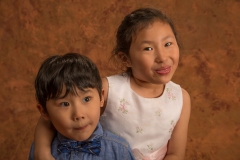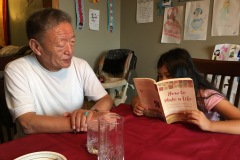Reader praise for How to Make a Life:
I stayed up until the wee hours to finish this book. It is a beautiful, tender, dear tribute to Tenzin and her family and to the immigrant experience. To be an immigrant is to forever have one’s heart in two places, never to be completely whole again.
~ Marilee S.
What a remarkable and conscientiously woven testimony to unique human spirits. The book balances just the right amount of historical facts with delicately chosen snippets of human struggle, courage, stamina, and joy of life.
~ Kerstin K
Hundreds of people will have the chance to read and enjoy and to know more about Tibet and our Tibetan culture throug your beautiful book.
~ Jampa K.
I didn’t want it to end. I loved the descriptions of foods and traditional costumes. I couldn’t put it down.
~ Marli J.
We are very glad that Madeline and the Tibetan family of Migmar la and Tenzin Kalsang have a very close bonding….helping each other so much like a family. In other words, they all live and practice the oneness of humanity!
~ Chhime C., Office of His Holiness the Dalai Lama
Parts read like a meditation, a payer, a Gregorian chant. I love every word.
~ Terry U.
The journey How to Make a Life is taking me into one Tibetan family has brought tears to my eyes. I appreciate Madeline’s writing of the subtleties of culture and her questions and changing perspectives.
~ Dory B.
One of my favorite passages from How to Make a Life was, “It was a huge step. It was the I-am-going-to-the-international-airport step, the step between the haves and have-nots of the world. It was the step that separates those who have the luxury to wander between the world’s pockets of prosperity and poverty, from those whose sphere is confined to a smaller circumference. That bittersweet step marks my greatest wealth.” That describes feelings I’ve had for years in an incredibly clear and poignant way. This book is wonderful.
~ Laura B.
How to Make a Life is a wonderful blend of personal story along with background on the conditions in Tibet, the migration across the Himalayas and experiences in refugee camps, then one family’s final arrival in America and in Madison, Wisconsin. Though Tibet was never a Peace Corps country, Madeline writes with the voice, compassion and experience of the Peace Corps Volunteer she became (Lesotho, Africa 07-09).
~ Kate S.
How to Make a Life was incredibly moving. Madeline’s writing is wonderfully descriptive and loaded with deep thoughts and insights.
~ Juanita P.
I hope and envision How to Make a Life will reach many at this pivotal time for our nation of immigrants. These are dark times. But How to Make a Life, and Madeline’s work in the world, brings Light.
~ Julie J.
I appreciate Madeline’s selflessness and hard work for the Tibetan people and our noble cause.
~ Nyima G.
How to Make a Life is a remarkable, heart touching and beautifully told story which took place in Madison, Wisconsin, and reached far beyond. Thank you for your dedication and involvement in helping others succeed.
Don M.
The writing was absolutely beautiful and I learned so much about the Tibetan people and their culture. Madeline’s relationship with Tenzin and Migmar is precious. What an incredible gift of friendship they gave to each other.
~ Janet B.
Madeline’s book is as much about missteps and unfulfilled expectations as it is about a multigenerational saga with a happy ending. Everyone in Madeline’s book travels and forms new and unexpected relationships. By the time characters reaches their destinations, each has been changed. There is a final twist in the book that I didn’t expect: After you have been to Shangri-La, how do you let go of that dream and transition to the next path? As Madeline quotes the Dalai Lama, “Judge your success by what you had to give up in order to get it.”
~ Terry H.
After I finished reading How to Make a Life, I felt I had been given a special glimpse that I will not forget into the lives of Tibetan history and its diaspora. Instead of overburdening the reader with detailed accountings of people and events, Uraneck manages to provide just the right amount of incidents, facts, and color to create a compelling portrait of a real family in one very particular cultural context.
~ Jane H.


